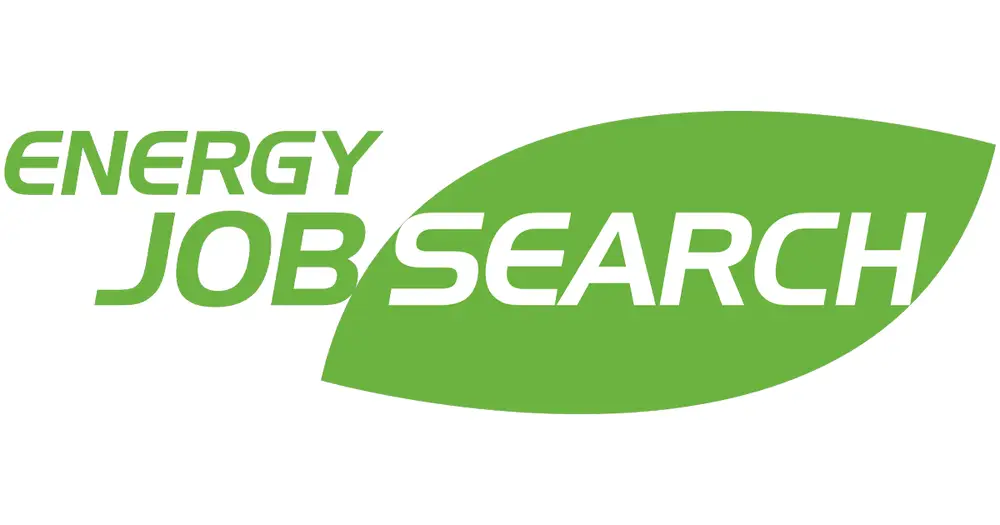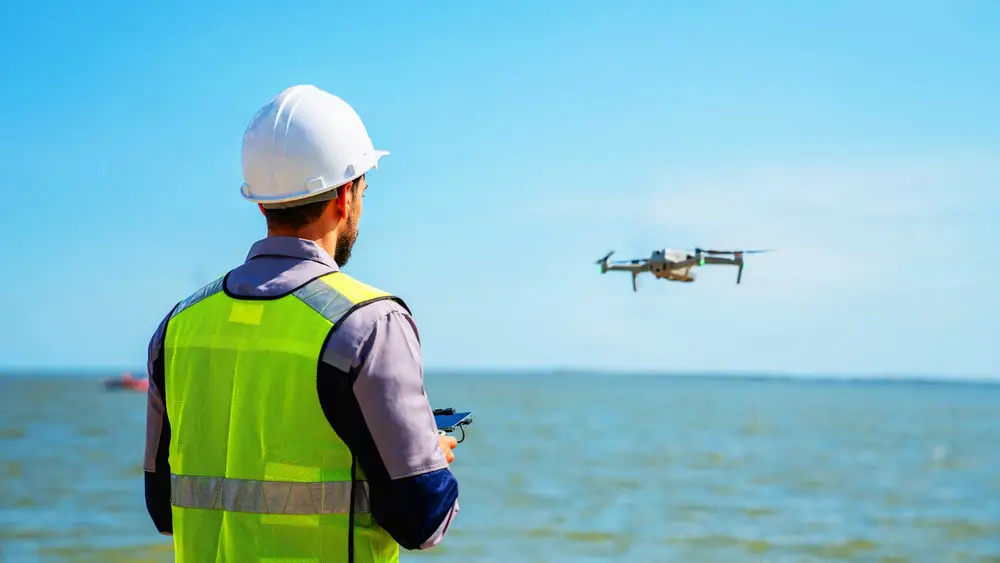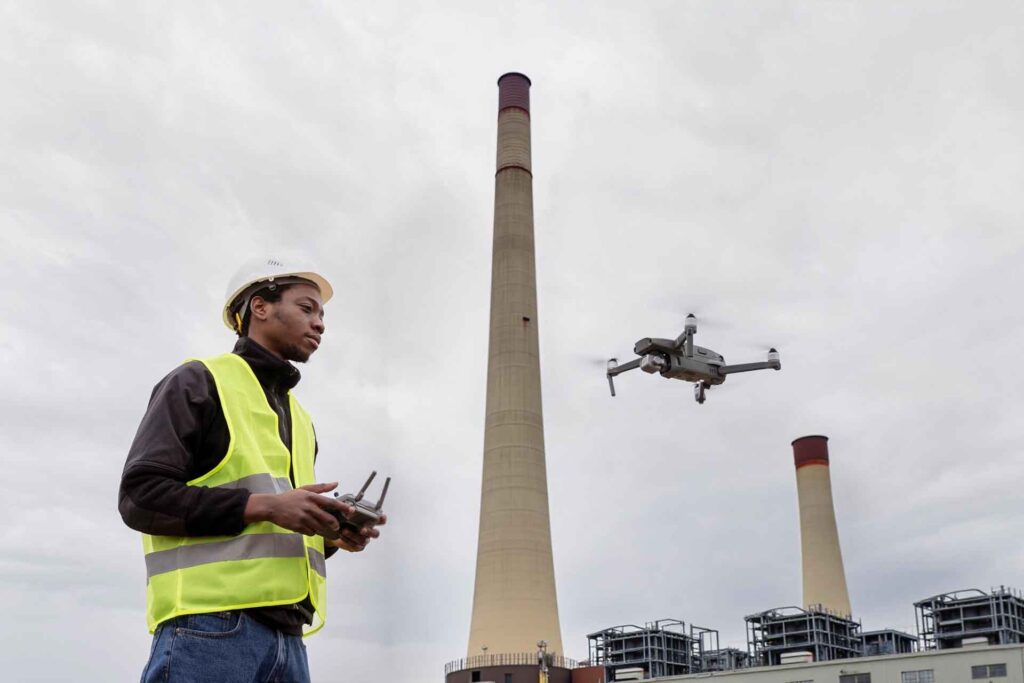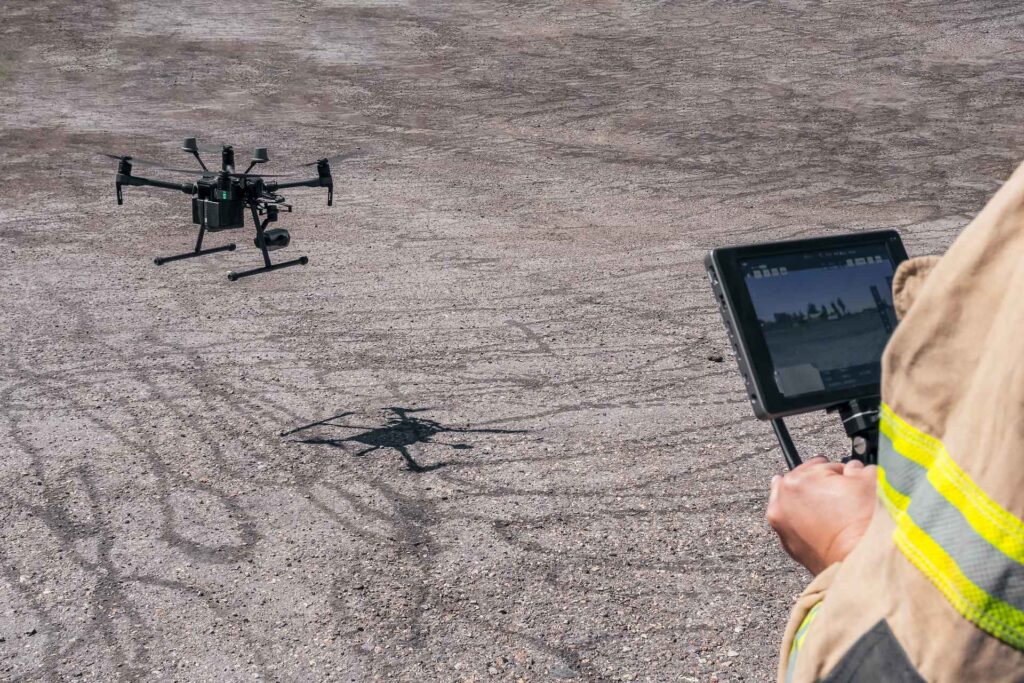Drones have technically been around for nearly 90 years since they were first invented for training during warfare. However, drone technology has developed since then, and drones are often used for commercial and personal purposes.
Many industries use this technology, and the oil and gas industry is no exception. So how can drones be used to help oil and gas companies further their business, and why are they so popular?
1. Drones Designed For Industry
As we’ve mentioned, drones have a lot of different uses and potential applications. This means that drone designs can differ.
Drones are typically fairly small and light, but you can get more extensive and robust designs. For instance, most modern drones also have camera attachments. This makes them more effective for capturing images and video.
When designing a drone for industrial use, you want something responsive that can capture high-quality images, ideally using different imaging systems. Infrared, visual RBG, or LIDAR imaging cameras are especially useful in the oil and gas industry.
Industrial drones in oil and gas are most often used for inspections and to survey areas. They can cover a lot of roles, including surveying equipment integrity, the environment, and new assets or plots of land, assessing structural health, and identifying any potential dangers or hazards.
“One of the most essential jobs a drone can do is inspect pipelines, refineries, and different areas. “
You can even use them as mobile security cameras.
So, when getting a drone for your business, make sure that it’s fully equipped for your needs. Otherwise, you’ve essentially got an expensive toy.
2. Increased Safety
The oil and gas industry can be dangerous to workers. You’re dealing with high temperatures and hazardous conditions, and an accident isn’t just costly; it can be fatal. A safe working environment is less expensive, so it pays to do what you can to protect your workers.
One of the most essential jobs a drone can do is inspect pipelines, refineries, and different areas. Of course, a person can do this as well. However, this means they have to physically be at the location and if there’s an issue or a danger, their life could be on the line.
A drone can stay out of danger much more easily than a person, as it can operate from a distance. Besides, if the worst happens, it’s better to lose a drone than a person.
3. Speed and Efficiency
Have you ever tried to race a drone? It doesn’t take long to realise that even small drones can outpace a person. That being said, industrial drones in oil and gas might be even faster!
A drone can make a visual inspection of a much larger area of land than a person, massively increasing surveillance speed. Even better, because drones can use different types of cameras, they can more easily and accurately spot spikes in temperature or other issues.
Your facilities might also have miles of pipeline, which would take ages for a human to inspect. Drones can easily get into small places that people can’t and rapidly scan an area.
In other words, a drone can massively reduce inspection time, allowing the project or job to continue smoothly. You can then move onto surveying other areas and expand the scope of your company.
4. Saving Money
One way that drones can save money is with their fast working speed. Time is money! The more time you spend waiting for an inspection, the more time you can’t spend working. You might still be paying employees and the costs of your equipment and facilities, but you can’t make money yet.
So, the faster a job is done, the less that job will cost you and profit rises. Even better, your company will have more funds to make further improvements. This is how businesses grow, they cut costs and improve profits in certain areas to boost efficiency and expand even further.
But drones in oil and gas save money in another way as well. A drone is a relatively small investment when you consider how effective it can be. You can cut down on labor costs because you don’t need to hire a lot of people to inspect a large plot of land or a lot of pipeline.
As we’re about to explore in more detail, drones can also help your team to spot dangers before they become a threat, allowing your company to react more quickly and reduce the potential cost of that hazard.
Not only this, but they can inspect equipment and machinery, so you can repair any damages rather than having to replace something if it breaks down
5. Dealing With Emergencies
The best time to deal with an emergency is before it happens. With thermal camera technology, drones can identify heat spikes and pipe weaknesses before they result in a disaster. This feature is essential for a quick reaction.
Of course, sometimes you can’t catch an emergency before it happens. Even in this case, a drone can help you gather all the data you need to respond.
For example, if there’s an oil spill, a drone can monitor the speed of the spill and map the area so you can come up with a strategy to mitigate any environmental damage. This is so important in the current climate where companies are expected to do everything they can to meet environmental goals.
Reputation can have a huge impact on a company. Even large corporations can be hit with the consequences of a disaster like this. The Deepwater Horizon oil spill of 2010 went on for years and is still considered one of the worst environmental disasters in history.
This disaster was preventable, as better maintenance of the pipeline and better surveillance of the area would have allowed for minimizing the oil leak. Drones allow companies to respond before these issues get out of hand.
6. Improved Data Collection
Getting information quickly has clear benefits, it’s also better to ensure that your information is as accurate and precise as possible. Camera technology has massively improved in recent years, allowing cameras and visual imaging systems to collect a massive amount of data.
As well as visual data, drones can also gather other data like temperature, humidity, and even environmental factors like soil health, water quality, and vegetation well-being in certain areas.
“It’s a good thing that drones are relatively user-friendly, because a drone is only really as effective as its controller.“
Knowledge is power, and data is knowledge.
The more data you can collate through drone surveillance and inspection, the better your company is able to make decisions. If this data is also collected quickly and accurately, all the better.
Of course, collecting data is only part of the battle. A drone can also translate that information into data that you can use, and all your company has to do then is to use the data for the better.
So, this might be to repair or reinforce a pipeline that is under a lot of pressure. It might be to change your drilling operations due to the potential environmental damage or to even change the environment itself to protect water supplies.
There are so many ways that data can inform your company and allow it to be flexible when needed.
7. Ease of Use
One of the best things about drones is that they can be easy to use. The simplest drone designs can be used by children and teenagers, although industrial drones might be more complicated than these designs.
You can either hire a dedicated drone controller who is trained to use drones or you can train one or more of your employees to control the drones.
As well as the drones themselves, you will also need other equipment and computers to collect, display, and translate the data gathered by the drones. This includes drone control software that works with the drones and allows your workers to use them to their fullest.
It’s a good thing that drones in oil and gas are relatively user-friendly, because a drone is only really as effective as its controller.
8. Implementing Drones in Oil and Gas Businesses
If your company doesn’t yet make use of drones, it might be missing out on a great opportunity. Yes, it’s an investment of money and potential training or hiring new employees, but drones will pay for themselves incredibly quickly.
Once you see the value of being able to rapidly scan a plot of land or miles of pipelines, you will see that the value of a drone far outweighs the cost. You can get more value out of your drones by looking for new ways to use them as well.
If you don’t have the manpower to secure a site, drones can provide surveillance and allow your security staff to respond to potential threats and intruders. If you don’t know how your drilling efforts will affect the environment, drones can monitor the area around the site and give you real-time information.
As long as you get the right drones for the job and pair them with the appropriate software, you can get a great deal of use out of them.











